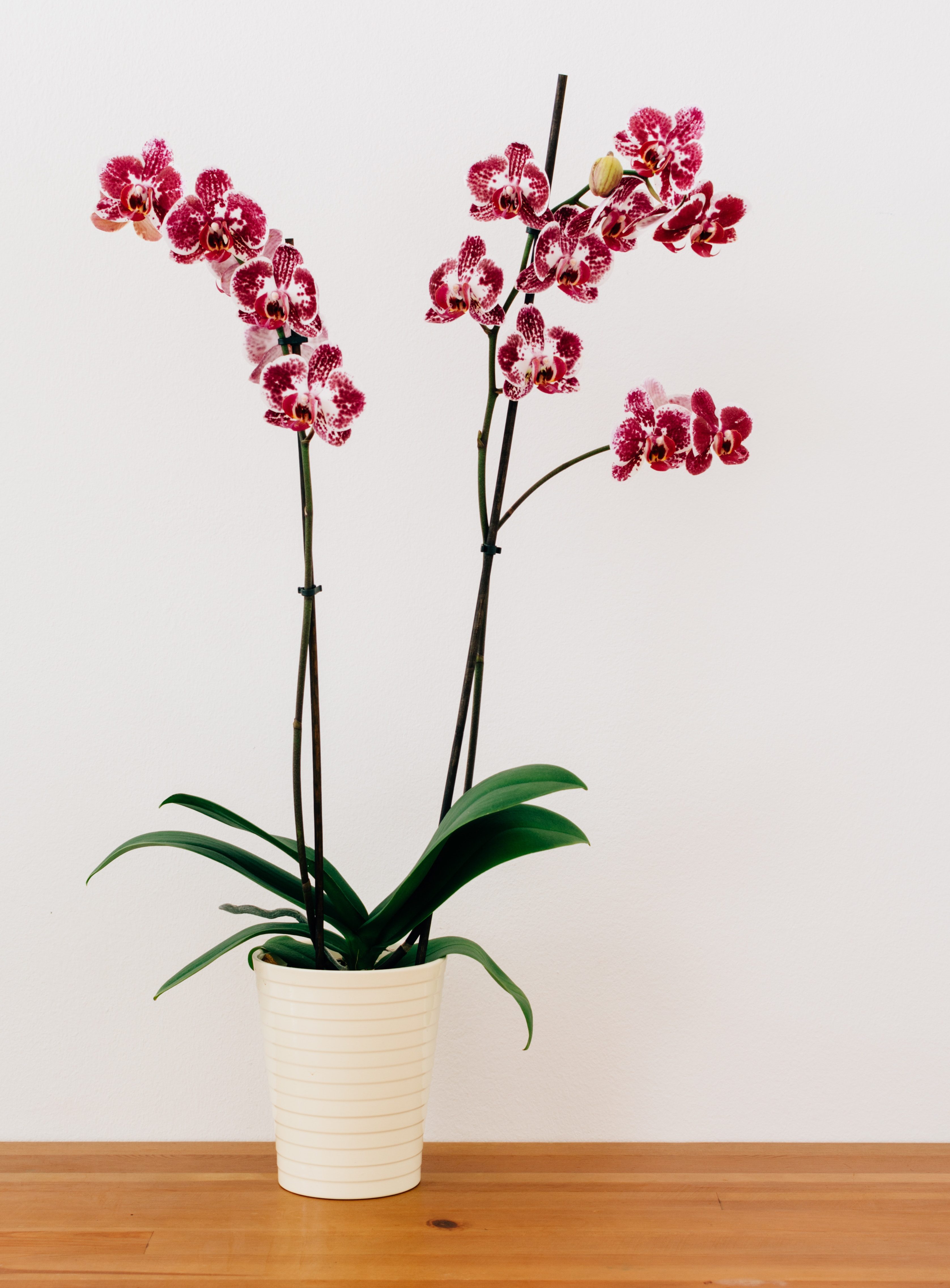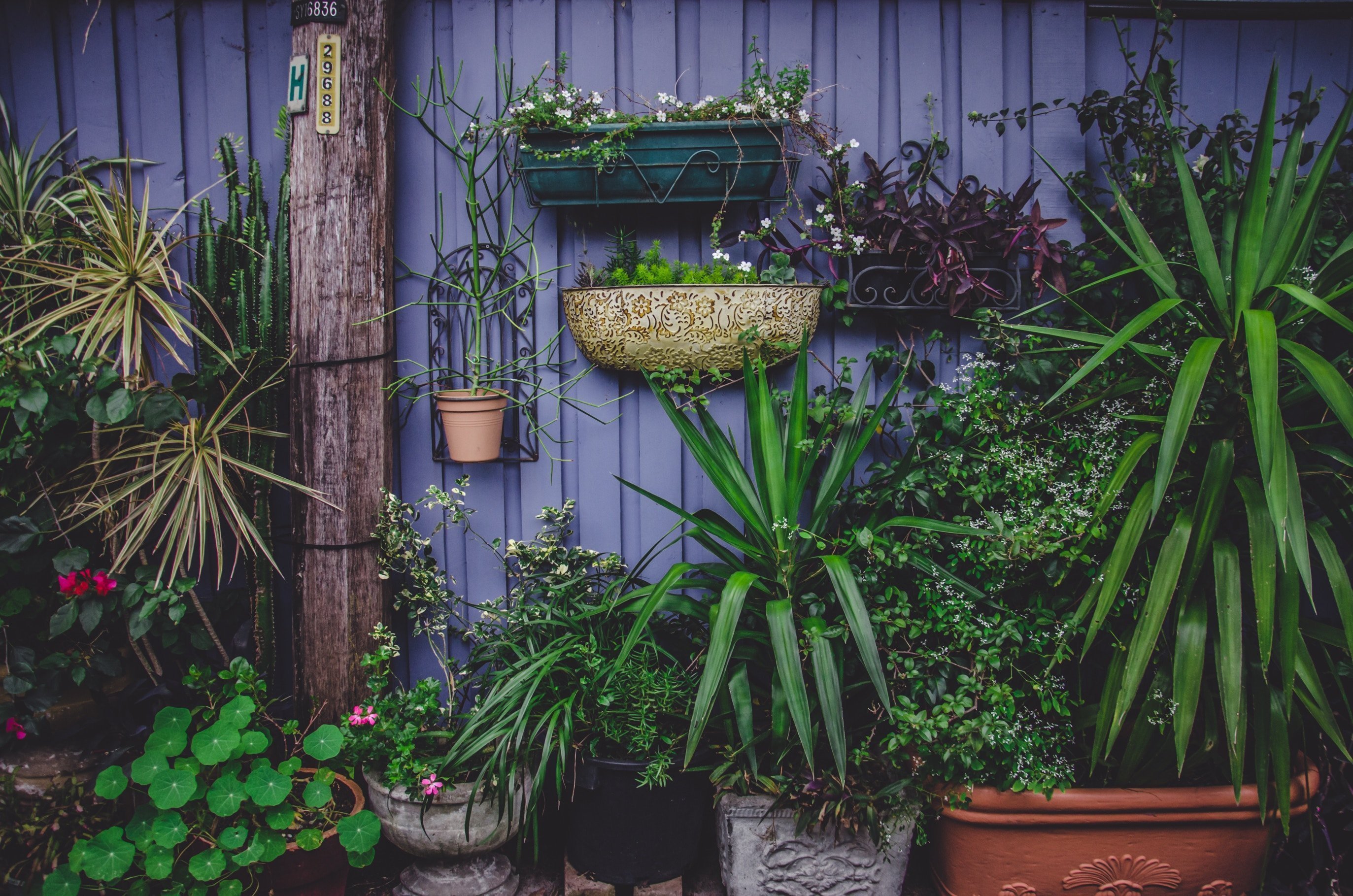With its elegant and differently colored flowers, the orchid is a real eye-catcher in your home. Delicate and graceful, it grows tall and develops its unique flowers that make your home shine. Even if the orchid does not normally grow in our latitudes, you can still easily let it bloom in your home. In our article we would like to show you what you have to consider when caring for orchids. After all, your plant should feel comfortable and secure with you!
The history of orchids
The orchid (Orchidaceae) describes a plant family with up to 30,000 species. In addition to its lush green leaves, it also produces flowers in a wide variety of color combinations. So has something for every taste. The kingdom of orchids is very diverse. They are found on every continent except Antarctica. However, the tropics and subtropics in South America and Asia are among their favorite natural locations. The orchid has been planted as a cultivated plant for hundreds of years. It is used in medicinal plants, spice production or symbolism. The Greek philosopher and natural scientist Theophrastus von Lesbos already described these plants around 300 BC. But it was only through Carl von Linné that the orchid species received their binary nomenclature as we know it today.
Orchid species
Since the orchid family includes many species and more and more are being added, we have listed the most common orchid species in our latitudes that we know as houseplants:
- Phalaenopsi
- Cattleya
- Cymbidium
- Dendrobium
- Brassia
The right orchid location for your home
Proper orchid care also includes finding the right location for your plant. For plants, the location can range from shady to semi-shady to sunny. Depending on which plant species it is, it places different conditions on its location. Your orchid also makes a number of demands on the environment in your home. If your orchid is in an unsuitable location, it can quickly mean the end for it. That's why we've briefly summarized some of the location requirements here.
- A location by a window facing west or east is very suitable for your orchid (no direct sunlight).
- In general, the plant tolerates temperatures of 25-30 °C best. This allows her flowers to develop optimally. In winter, the temperature should not fall below 18 °C.
- A humidity level of at least 50% is ideal for the orchid.

Orchids in the bedroom yes or no?
Your bedroom can also serve as an orchid location. The plants feel very comfortable here. It has even been scientifically proven that they increase the humidity in the room, which leads to an improved indoor climate. In addition, they radiate a good mood atmosphere with their elegant flowers.
Warning: If you are a pollen allergy sufferer, then you should of course avoid any flowering or green indoor plants in your bedroom.
In our article "9 plants for the bedroom" we show you other green beauties that are suitable for this room.
Orchid care: watering, fertilizing, cutting etc.
Orchid care includes a few important things that you should consider.Here
we will show you how to properly water your plant or start your own orchid familyWater orchids properly
Watering orchids correctly is very important. Not only does it depend on what water you use, but also what method you use to water your plant. This is the only way for it to grow optimally and not to rot in the end because you have watered it too much.
Use the right water for watering
It is best to use rainwater for watering. Since many orchids grow on trees, this water is very suitable for watering. The often calcareous tap water is not suitable for watering orchids.
Which method should you use for casting?
Diving as a casting method corresponds more to natural conditions than ordinary casting. Orchids are mainly found in the rain forests of our planet. Sudden and heavy rainfall is very common there. So put your orchid in a container full of water once a week (twice in summer). The roots start absorbing water immediately. After about half an hour you can take them out of the pot again.

Fertilize orchids properly
Proper care for orchids also includes correct use of fertilizer. Orchids are normally used to getting their nutrients from the air or rainwater. The sudden rains that often occur in the tropics give them small amounts of salts, phosphorus, potassium, calcium, magnesium, nitrogen, zinc and manganese. In order to ensure this nutrient supply in your home, you should not use the usual plant fertilizer, but use a special orchid fertilizer. This has the optimal composition of nutrients.
Tip: Only fertilize your orchids during the growth phase, in winter they do not need any extra nutrients from you. If you use the immersion method when watering, add a dose of liquid orchid fertilizer every two weeks. This weakly dosed fertilizer is sufficient for your plant.
Cut orchid aerial roots or not? – The correct pruning of orchids
If you want to complete your orchid care properly, then regular trimming of orchids is part of it. After all, the plant should be able to show its flowers in full size. The orchid is one of the plants that have so-called aerial roots that hang out of the ground. The orchid uses these special roots to absorb water and nutrients from the air. The texture is similar to a sponge and is also responsible for storing water. Even if the aerial roots may not look so pretty, they are vital for the orchid. That's why you shouldn't cut them off, unless they're dead aerial roots.
Tip: If you spray the aerial roots with water and they then turn greenish, then they are still healthy. If not, then they are already dead and you can carefully cut them off with a sharp knife.

Propagating orchids: start your orchid family
Repotting the orchid is a good time to propagate your plant. With offshoots of the plant, you can start your own small or large orchid family. By regularly separating offshoots, your plant stays young and vital and also forms beautiful, long flowers over and over again. Here you have a step-by-step guide:
- Carefully detach the attached roots of the scion and mother plant.Also remove dead roots
- After dividing the offshoot from the mother plant, place it in a new, larger container.
- Now continue to fill the pot with orchid soil. Be careful not to create too large cavities.
- As soon as the little offshoot is sitting well in its new pot, you can water it with a spray bottle full of water. After some time the roots have anchored themselves in the new soil, then you can use the weekly immersion bath for watering.
Flowering time: make orchids bloom
If the orchids are cared for incorrectly, your plant may not bloom at all or only bloom very sparingly. So that this is not the case, we have put together a few tips for you so that your orchid appears in all its glory and enchants its viewer.
- Although your orchid needs a lot of light, it shouldn't be in full midday sun.
- The orchid does not tolerate large temperature fluctuations either. I.e. the fluctuation should not be greater than 2-3 °C.
- Avoid drafts near them.
- In its natural environment in the tropics, it is used to high humidity. Make sure that the room climate is at least 60% humidity.
- Excess water should not remain in the pot, but should always be able to drain away easily.
- Always use special orchid fertilizer for fertilizing.

Are orchids poisonous?
You are probably also wondering whether your plant contains dangerous substances that can be toxic. For this reason we want to clarify the question here: Are orchids poisonous for cats, dogs or children? Since there are over 30,000 different species, it cannot be said that orchids are poisonous or not. Nevertheless, you can actually be sure that the orchid you bought in a store is not poisonous for your four-legged friends or your children. Nevertheless, you should make sure that it is not consumed. If this should happen and you are unsure, it is best to take your pet or small child to the doctor. Better one gear too many than too few!
Tips for problems with orchids
You see, the right orchid care must be skillful. If you still notice that something is wrong with your orchid, it may be infested with plant pests or another disease. Or maybe the location is not optimal. For this reason, we have listed the most common problems and how you can treat or prevent them in the article "Orchid diseases what to do?". We are sure that with the right care and a lot of love, you can give the orchid a new home with you! If you would like to have more orchids in your home, then please have a look at our orchid collection. Here we have already put together our orchids for you!
.



















Leave a comment